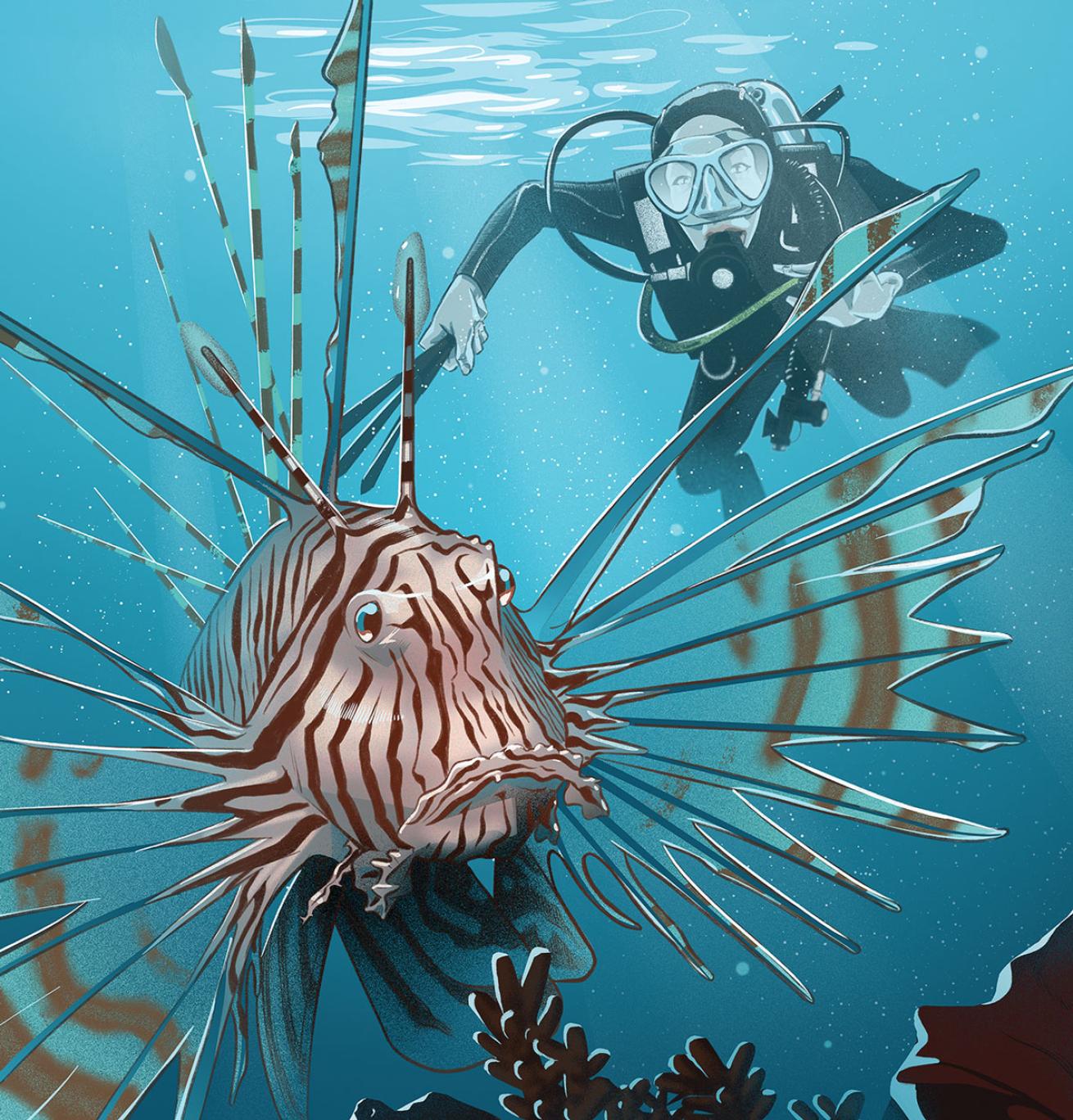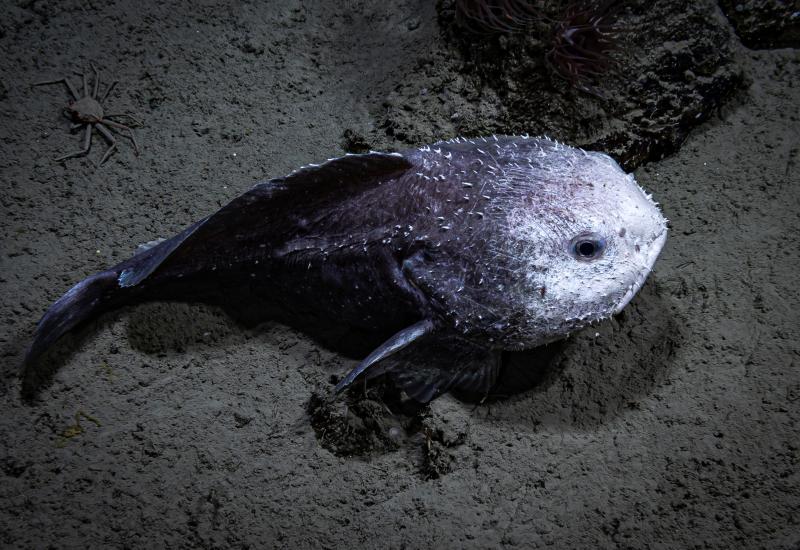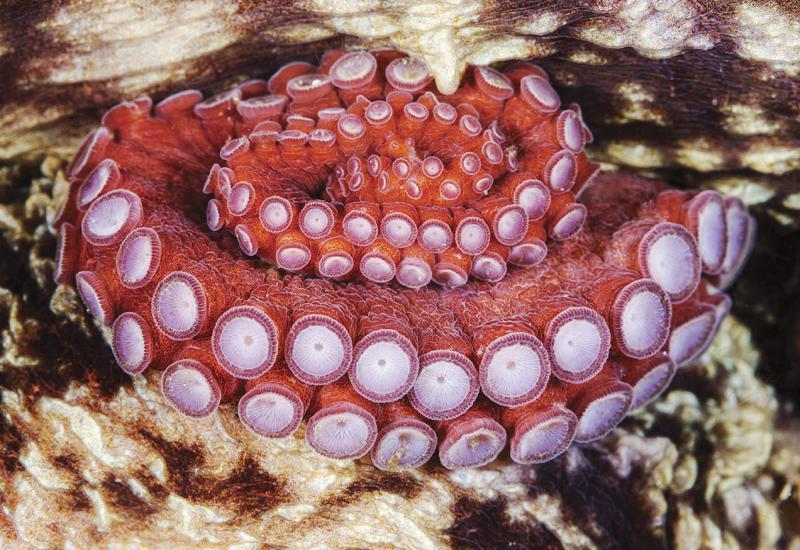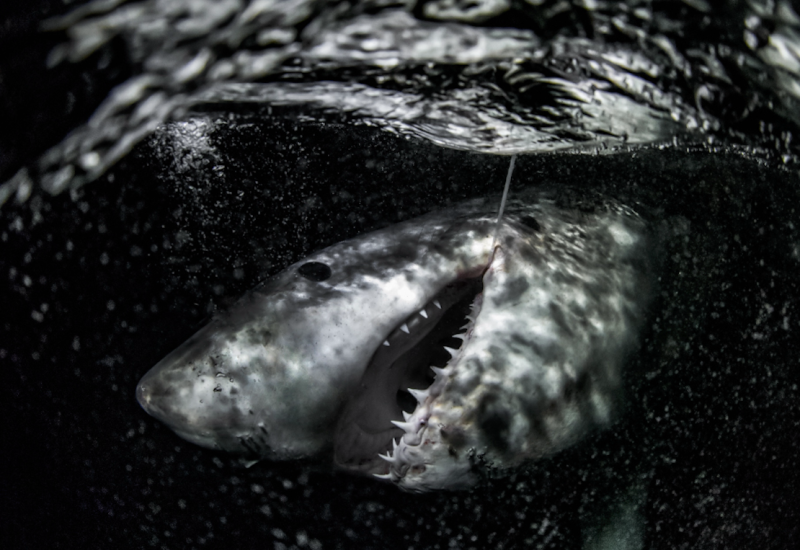What It's Like to Hunt Lionfish

Steven P. HughesResearch shows lionfish are capable of reducing native fish populations by as much as 90 percent in some areas.
I position the rubber sling between my thumb and forefinger, locked, loaded and ready for action. My dive buddy points to the target hovering slowly at the base of the concrete artificial reef and I move in, trying not to startle the unsuspecting lionfish. Thwap. I release my sling and then...nothing. There’s no noise—just silence, and the anxious feeling of wondering whether my shot was a success.
The next thing I hear is an excited shriek through my dive buddy’s regulator as he raises a hand for a congratulatory fist bump to celebrate spearing my first lionfish. We’re 110 feet deep in the Gulf of Mexico off Destin, Florida, and my buddy continues to point out each lionfish until we’ve wiped the site.
I don’t consider myself a heartless killer, and I’ve never been particularly interested in spearfishing, but this is a special circumstance. In the Gulf of Mexico, Caribbean and Atlantic, lionfish are an invasive species with no natural predators. Research shows they’re capable of reducing native fish populations by as much as 90 percent in some areas. Lionfish can reproduce at an alarming rate (females can spawn 2 million eggs per year), and one lionfish alone can consume up to 20 fish in just a half-hour.
Unlike traditional spearfishing, hunting lionfish involves relatively little gear and doesn’t require a license in Florida. The pole spear used to hunt lionfish is simple to operate: It has a rubber sling that acts like a bungee when positioned between your fingers, and several metal prongs at one end that function as the spear. Lionfish have venomous spines, so it’s a good idea to carry a lionfish containment device such as a Zookeeper.
The hunt was surprisingly easy and left me with a sense of accomplishment for helping protect native fish species. With lionfish derbies popping up all over, it’s never been easier to pitch in. Divers removed 19,167 invasive lionfish from the Gulf of Mexico during the 2019 Emerald Coast Open in Okaloosa County, Florida.
Divers are on the front line of this fight—participating in lionfish-removal events and raising awareness now is more crucial than ever.
How to Get Involved with Lionfish Removal
There are a number of organizations focused on lionfish awareness efforts and removal. The best way to get involved with lionfish removal is to participate in removal events or get involved with a lionfish organization, especially if you have no prior experience with lionfish removal. Here are a few organizations where you can get involved:
FWC Reef Rangers
REEF Lionfish Derby Series
Coast Watch Alliance
Texas Lionfish Control Unit
Lionfish University










